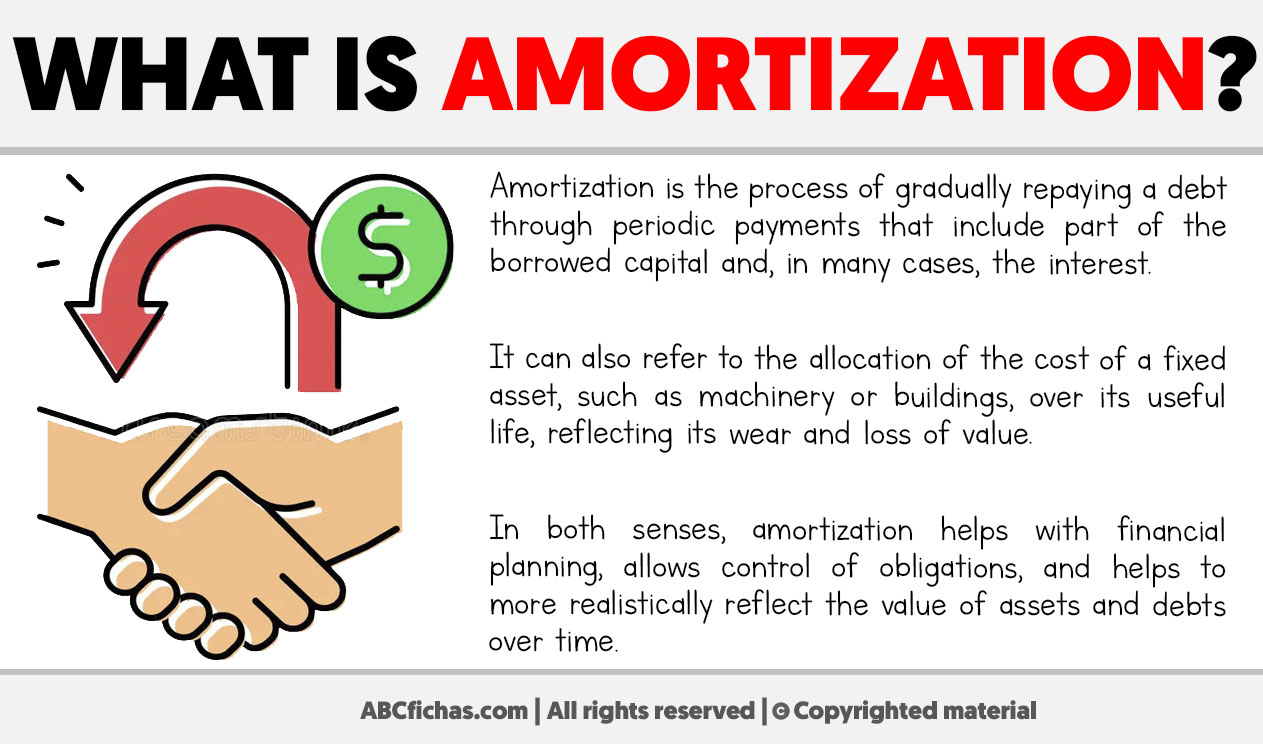Amortization is the process of gradually paying off a debt through scheduled, periodic payments that include both principal and, in many cases, interest. This repayment structure helps borrowers manage large loans such as mortgages, car loans, or business financing by spreading the cost over time. Instead of having to return the entire sum at once, borrowers can meet their obligations in smaller, more manageable amounts.

Each payment reduces the outstanding balance, making the debt shrink progressively until it is fully settled.
Amortization is not limited to debt repayment. In accounting and finance, the term also refers to the allocation of the cost of an intangible or fixed asset across its useful life. For instance, machinery, vehicles, or buildings lose value as they age due to wear and tear. By spreading this expense over time, companies can record depreciation or amortization in their financial statements, reflecting the real value of their resources.
In both senses, amortization serves a critical purpose. It provides a structured way to manage financial obligations while also ensuring more accurate financial reporting. For individuals and businesses alike, it supports long-term planning, helps control cash flow, and aligns the recognition of costs with the actual use of assets or debt repayment.